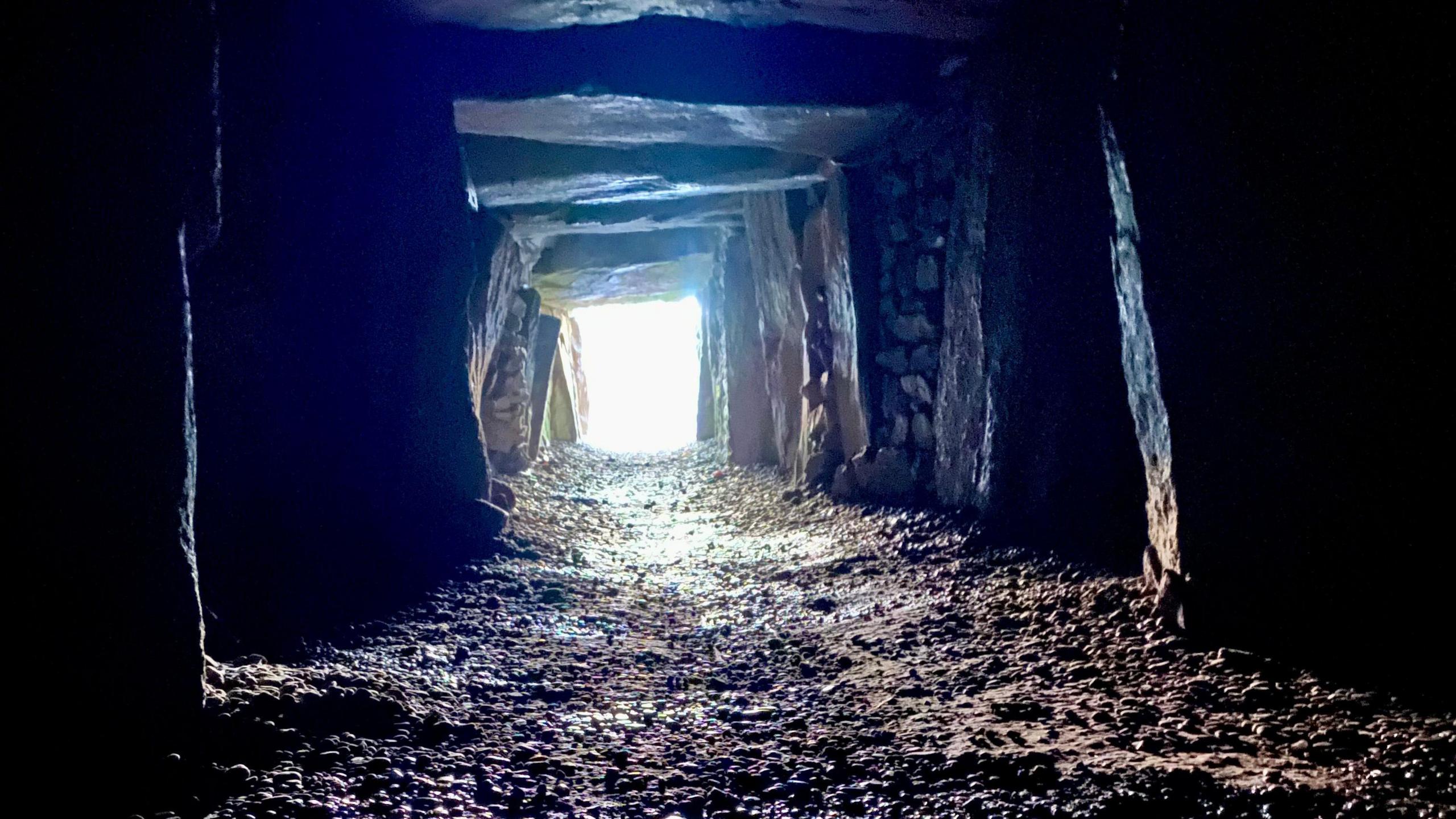Neolithic passage grave comes to life with sound

The Neolithic passage grave at La Hougue Bie was uncovered by Société Jersiaise archaeologists in 1924
- Published
One of the oldest Neolithic sites in the world discovered in Jersey 100 years ago has been filled with sounds crafted from stones.
The six-minute art commission called Lithophilia, created by composer Charles Mauleverer, has been installed in the 6,000-year-old passage grave at La Hougue Bie.
Mr Mauleverer said his composition "breathes life into the ancient passage grave, connecting visitors to the island's deep geological and historical roots".
The exhibition, commissioned by Jersey Heritage and Société Jersiaise, is scheduled to run until the end of November.
Composer Charles Mauleverer has created a six-minute sound composition using stones found in Jersey
Mr Mauleverer said decided to use stone for his installation because the site was built in the stone age.
He spoke to geologists who helped him identify and collect samples from every different type of rock that exists in Jersey, while a colleague built two lithophones, similar to stone xylophones.
Mr Mauleverer said: "We then recorded all the stones together in a studio, scraping, tapping, wobbling, shaking, white noise - as many different sounds as we could think of, to create the six-speaker surround experience in the magical passage grave on the ancient site, which I've remixed as a stereo file for radio."
Follow BBC Jersey on X, external and Facebook, external. Send your story ideas to channel.islands@bbc.co.uk, external.
- Published24 September
- Published9 August
- Published1 March 2023